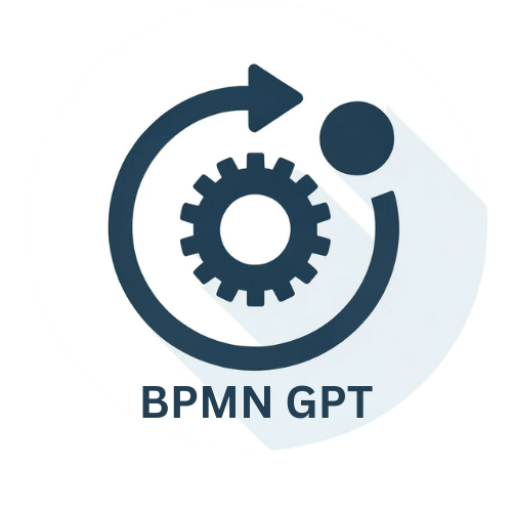Swimlanes GPT-AI flowchart creation tool
AI-powered diagramming for complex workflows
How do I create a sequence diagram?
Can you show me an example of a conditional flow?
What is the syntax for adding notes in Swimlanes?
I need a diagram showing a process with delays.
Related Tools
Load More
BPMN-GPT
Business Process Management Notation GPT. Transform your process steps into BPMN code

GPTChart
Visualize charts and graphs from data input to facilitate your detailed analysis.

GPT Lean Canvas
I guide in creating lean canvases, with a final visual via Zapier on Miro.

GPT Idea Roller
Sparking joy with AI brainwaves!

GPT for Modelling System Dynamics
Expert in dynamic systems modeling and simulation

Scenario Planning GPT
A GPT for creating scenarios and strategies for scenario planning.
20.0 / 5 (200 votes)
Introduction to Swimlanes GPT
Swimlanes GPT is a specialized version of ChatGPT designed to assist users in creating flow diagrams using the Swimlanes syntax. The primary purpose of Swimlanes GPT is to help visualize processes, workflows, and systems by converting textual descriptions into structured diagrams. This tool is particularly useful for creating clear and organized visual representations of complex processes, making it easier for users to communicate and understand workflows. For example, if a user wants to illustrate the process of order fulfillment in an e-commerce business, they can describe each step, such as order received, payment processed, item packed, and item shipped. Swimlanes GPT will then generate a flow diagram that clearly depicts each stage and the interactions between different departments involved.

Main Functions of Swimlanes GPT
Creating Flow Diagrams
Example
Generating a diagram that visualizes the steps in a customer service process, from initial inquiry to issue resolution.
Scenario
A customer service manager wants to improve response times and needs a visual representation of the current process to identify bottlenecks. By providing a textual description of the process, Swimlanes GPT generates a flow diagram that highlights each step and the responsible team members, making it easier to analyze and optimize the workflow.
Visualizing Workflows
Example
Designing a workflow for a software development cycle, including phases like planning, development, testing, and deployment.
Scenario
A project manager in a software development company needs to present the development workflow to new team members. Using Swimlanes GPT, they can describe the sequence of tasks and responsibilities, resulting in a clear, visual workflow diagram that helps new hires understand their roles and the overall process.
System Diagramming
Example
Creating a diagram to show the interaction between different components of an IT infrastructure, such as servers, databases, and user interfaces.
Scenario
An IT architect needs to document the current system architecture for a company's internal network. By detailing the components and their interactions, Swimlanes GPT produces a system diagram that provides a comprehensive overview of the infrastructure, aiding in maintenance and future upgrades.
Ideal Users of Swimlanes GPT
Business Analysts
Business analysts who need to document and analyze business processes can greatly benefit from Swimlanes GPT. By converting textual descriptions into visual diagrams, analysts can more easily identify inefficiencies, propose improvements, and communicate findings to stakeholders.
Project Managers
Project managers overseeing complex projects with multiple stages and team interactions can use Swimlanes GPT to create detailed workflows and process diagrams. These visual tools help in planning, monitoring progress, and ensuring that all team members are aligned with the project objectives.
Educators and Trainers
Educators and trainers can use Swimlanes GPT to create educational materials that include flow diagrams and workflows. These visual aids can enhance teaching and training sessions by providing clear and concise representations of processes and systems, aiding in the learners' understanding.
IT Professionals
IT professionals such as system architects, developers, and network administrators can utilize Swimlanes GPT to document and visualize complex IT systems and processes. This can help in troubleshooting, system design, and explaining technical concepts to non-technical stakeholders.

How to Use Swimlanes GPT
1
Visit aichatonline.org for a free trial without login, also no need for ChatGPT Plus.
2
Familiarize yourself with the Swimlanes syntax and basic principles of creating flow diagrams. This will help you in structuring your inputs correctly.
3
Describe your process, workflow, or system in a clear and concise manner. Use natural language but aim to be specific about the steps and decisions involved.
4
Submit your description to Swimlanes GPT. Ensure you provide any necessary details, such as conditions for different flows or specific labels for swimlanes.
5
Review the generated diagram and make any necessary adjustments. You can refine your description and resubmit to perfect the visualization.
Try other advanced and practical GPTs
Gantt Chart Maker AI
AI-Powered Gantt Chart Creation

Asesor personal
Empower Your Journey with AI Insight
ReplyGPT
AI-powered replies for social engagement.

Developmental EditorBot - CE 101
AI-Powered Content Improvement

Draw Plus for DALL€: Fast&convenient – 16:9 Ratio
AI-powered artistic transformation tool.

AI Muscle Motivation💪Manga & Anime Bodybuilder EX
Unleash Your Inner Bodybuilder with AI-Powered Images!
Beautiful.ai
Transform ideas into stunning presentations with AI.
AI Cannabis News Journal
Your AI Gateway to Cannabis News

プロンプトエンジニア
Enhance your prompts with AI precision
Ignition-AI
Empowering Industrial Automation with AI

KABUTO-23X-IT
Unleash the Power of AI with KABUTO-23X-IT

The Simulation
Experience Life's Journey with AI

- Project Planning
- Task Management
- System Design
- Process Mapping
- Workflow Visualization
Detailed Q&A about Swimlanes GPT
What is Swimlanes GPT used for?
Swimlanes GPT is used for creating flow diagrams that help visualize processes, workflows, or systems. It's particularly useful for project management, process documentation, and system design.
Do I need any special software to use Swimlanes GPT?
No, you do not need any special software. Swimlanes GPT can be accessed online through aichatonline.org, and it does not require any additional installations.
Can Swimlanes GPT handle complex workflows with multiple conditions?
Yes, Swimlanes GPT is designed to handle complex workflows, including those with multiple conditions and branching paths. You can specify different conditions and flows in your description, and the tool will generate the corresponding diagram.
Is there a limit to the number of steps I can include in a diagram?
There is no strict limit to the number of steps you can include. However, for clarity and readability, it is recommended to break down extremely complex processes into smaller, manageable sections.
How can I ensure my input is correctly interpreted by Swimlanes GPT?
To ensure your input is correctly interpreted, use clear and concise language, and be specific about the steps, decisions, and conditions in your process. Familiarizing yourself with the Swimlanes syntax can also help in structuring your description effectively.